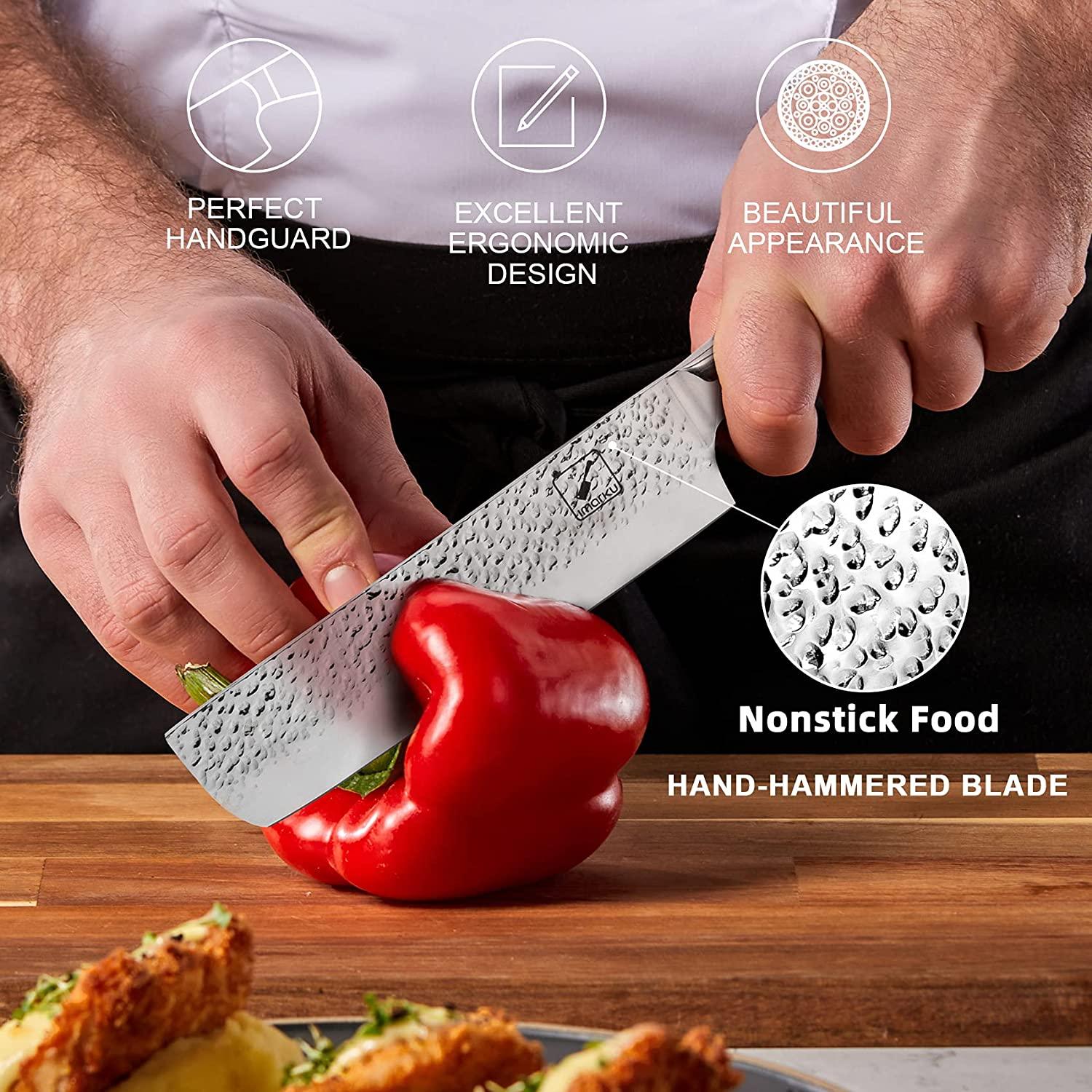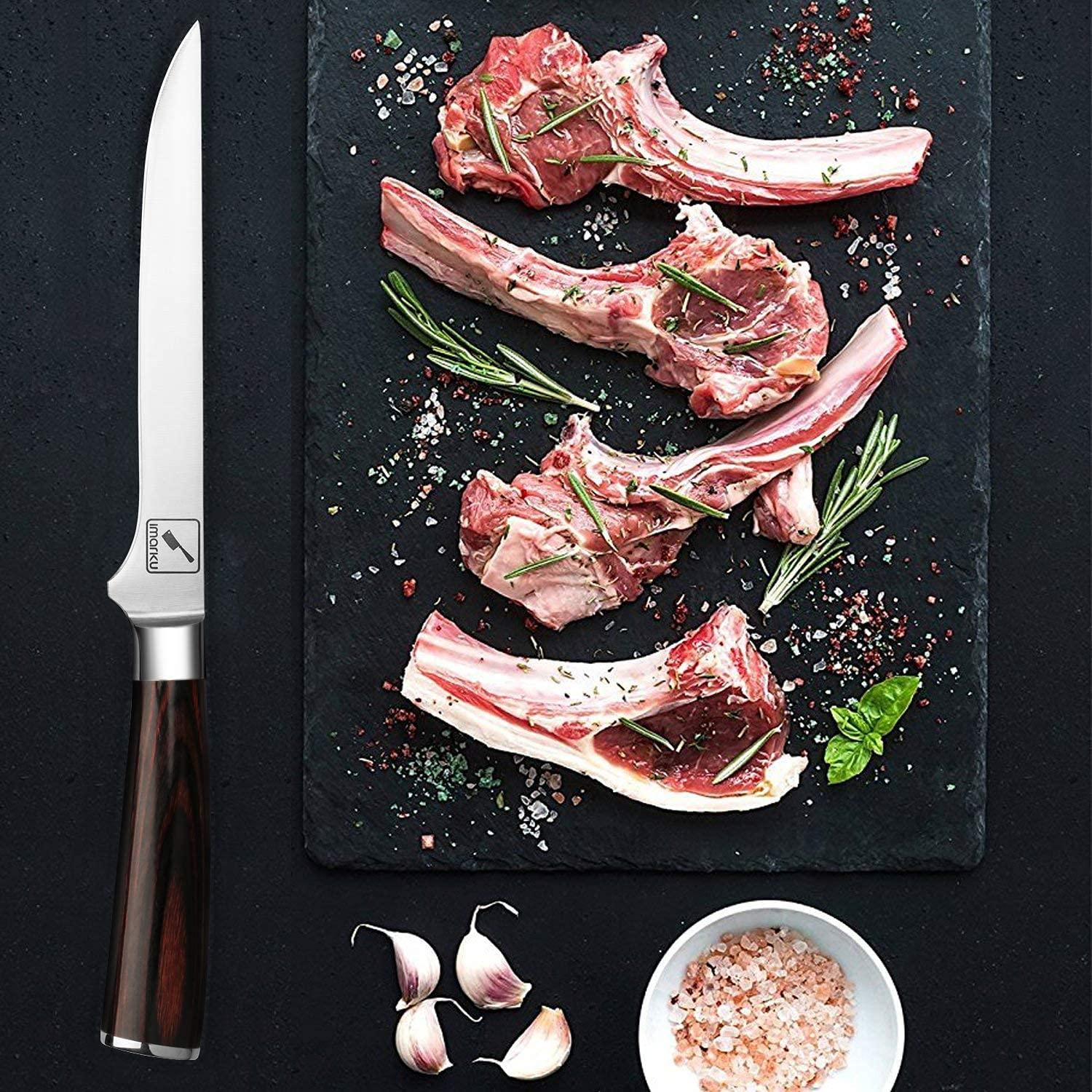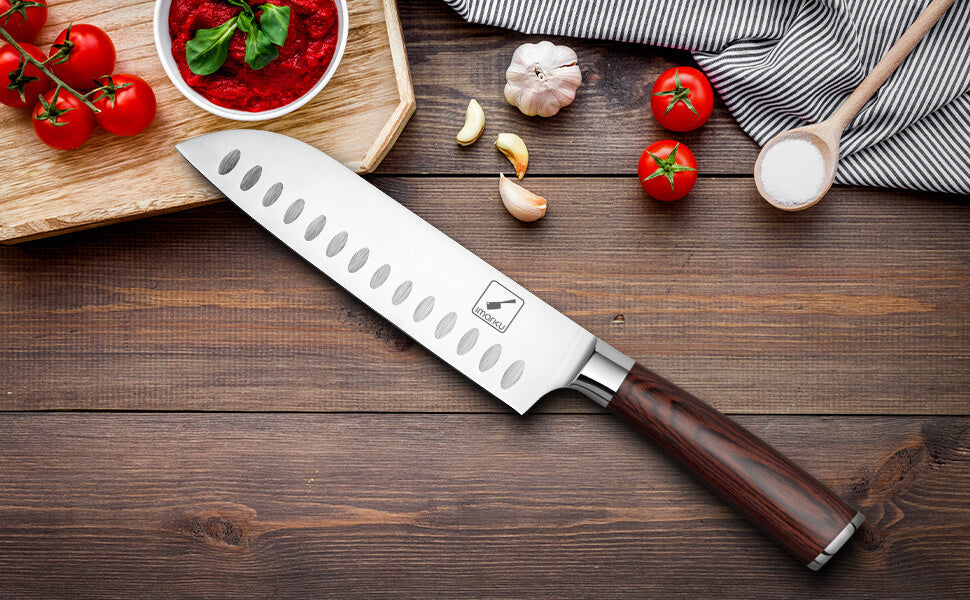TABLE OF CONTENTS
How To Hold A Knife Like A Chef And Cook Like A Pro
With culinary arts gaining admiration over television shows, a rising number of home chefs are moving into the hobby of preparing restaurant-like cuisine at home. Obtaining ingredients is easy, and you can also lay your hands on high-end kitchen equipment like knives. But learning how to hold a knife and slice like the pro is a different ball game together. Let’s learn the correct way of holding your kitchen blade.
1. The First Choice: The Handle Grip
The handle grip is also known as an all-purpose grip. You can begin by looping with all the fingers wrapped around the knife. Next, hold the kitchen blade firmly in the palm. All your finders should sit snugly under the support. If this position is not comfortable, you may have to adjust your grip.
The handle grip is most suited for chopping and dicing motions. It will not let you exert much control, and if you want to have neat cuts, you may have to change the finger grip. This is great for cutting various kinds of ingredients for longer without the wrist or finger feeling tired.
2. An Alternate Choice: The Blade Grip
The Blade Grip is also known as the pinch grip since it appears that the user is pinching the blade. This technique is a bit harder, and it’s better to attempt it after earning some amount of experience. To hold this grip, you will need to hold three fingers to grasp the handle of the kitchen blade while your thumb and index finger will hold the blade directly. The forefinger and the thumb will sit on the opposite of the blades from one another.
You must keep your blade firmly held. The advantage of this grip is that it proffers great control over hand movements. It may appear a bit unstable, but it is a very defensive way of holding the knife like a professional chef.

3. Keeping Your Other Hand Active: The Claw Grip
This is a modified type of claw grip where the first knuckle of your guiding hand will rest flat on the stuff you are cutting while the fingers remain curled securely. At this point, the knife should better rest against the second knuckle in place of the first. Both variants of the claw grips are effective, and you can choose what suits you. Chopping onions is a great way to practice comfort in this gripping style.
When you want to chop like the professionals, learning how to hold a knife is not enough. You must train both your hands is a necessity. Your off-hand also plays a critical role in becoming your guide, no matter whether you are trying to chop or dice or slice something. It should be in the clawing position as a means of reliable kitchen safety. But it would help if you were careful not to raise the cutting edge of your kitchen blade over the second knuckle else, you may end up slicing the finger.
4. The Knife Pressing Motion
When you want to mince ginger, herbs, or garlic, you will find the knife pressing motion very useful. In this motion, you will have to hold the knife in the blade grip form, take your other hand, and put the tips of all the fingers on the top of the blade tip of the knife. Then, you will have to rock your knife in a rocking motion as many times as possible to prepare a fine mince of the ingredient you are chopping.
Other Tips to Follow While Using The Knife
While you are trying to hone your skills in cutting like a professional, you must exercise caution so that you don’t end up injuring yourself. So here are a few tips that you must follow while using your top-level kitchen blade.
- Keeping the board still Even though you may have learned to hold your knife like a chef, it doesn’t mean that you are saved from accidental cuts. As long as your wooden cutting board isn’t warped, it must stay firm in the position. If you are using a board made of plastic, it’s better to place it over a kitchen towel.
- Maintaining the sharpness of the blade Dull knives may slip when you are cutting. So it’s better to keep your knives ultra-sharp and away from the reach of children and pets. Make the slices away from your hand and maintain the distance between the blade and your fingers. This will prevent accidental cuts in case your knife slips.
- Keeping the tip of the knife on the board When attempting to mince anything, you must keep the tip of the kitchen blade on the chopping board and pump in the handle in a rocking motion very fast. And as the knife will be moving very fast, you must be very careful. Also, never use your palm as a platform for cutting. It would help if you held the thing you are cutting with your knuckles since it’s better to get a tap on the knuckles than chopping off your fingertip.
- Be careful with steak knives Remember that steak knives are sharp enough to cut through meat, and they may hurt you before you realize it. The last thing you should do is slice something freehand over the pot.
- Using a bench scraper In place of scooping everything from the board before transferring them to the cooking pot. It is faster and more effective than walking around the kitchen with a knife and aboard.

The Bottom Line
Once you become habituated to the feel and comfort of the right grip, nothing else will work for you. You will not have to wrack your brain thinking how to hold a knife, your hand will automatically understand the mistake you are making. The muscle memory will probe you to make the right adjustments and you can go on cutting like a pro.























Leave a comment
All comments are moderated before being published.
This site is protected by hCaptcha and the hCaptcha Privacy Policy and Terms of Service apply.